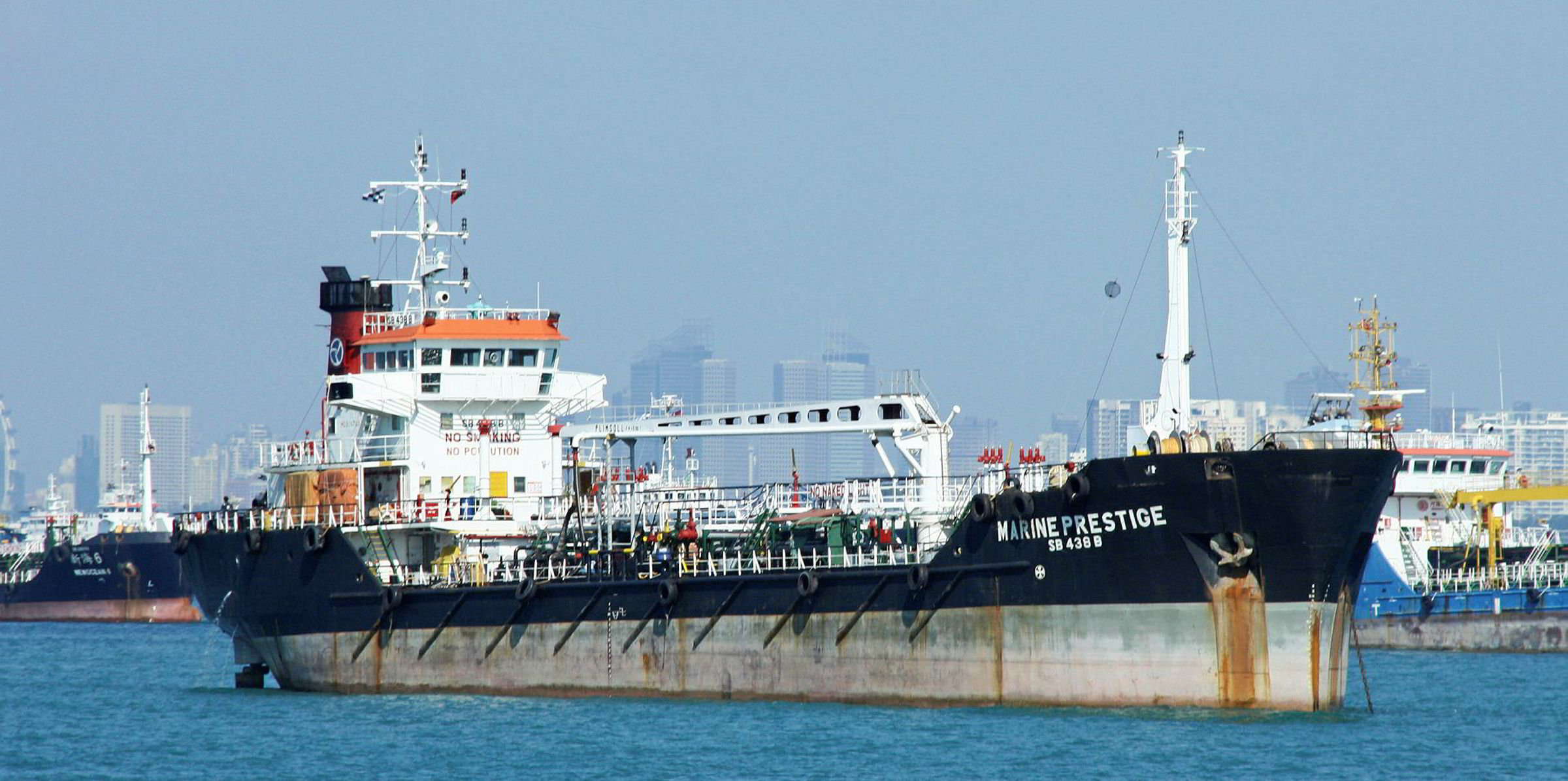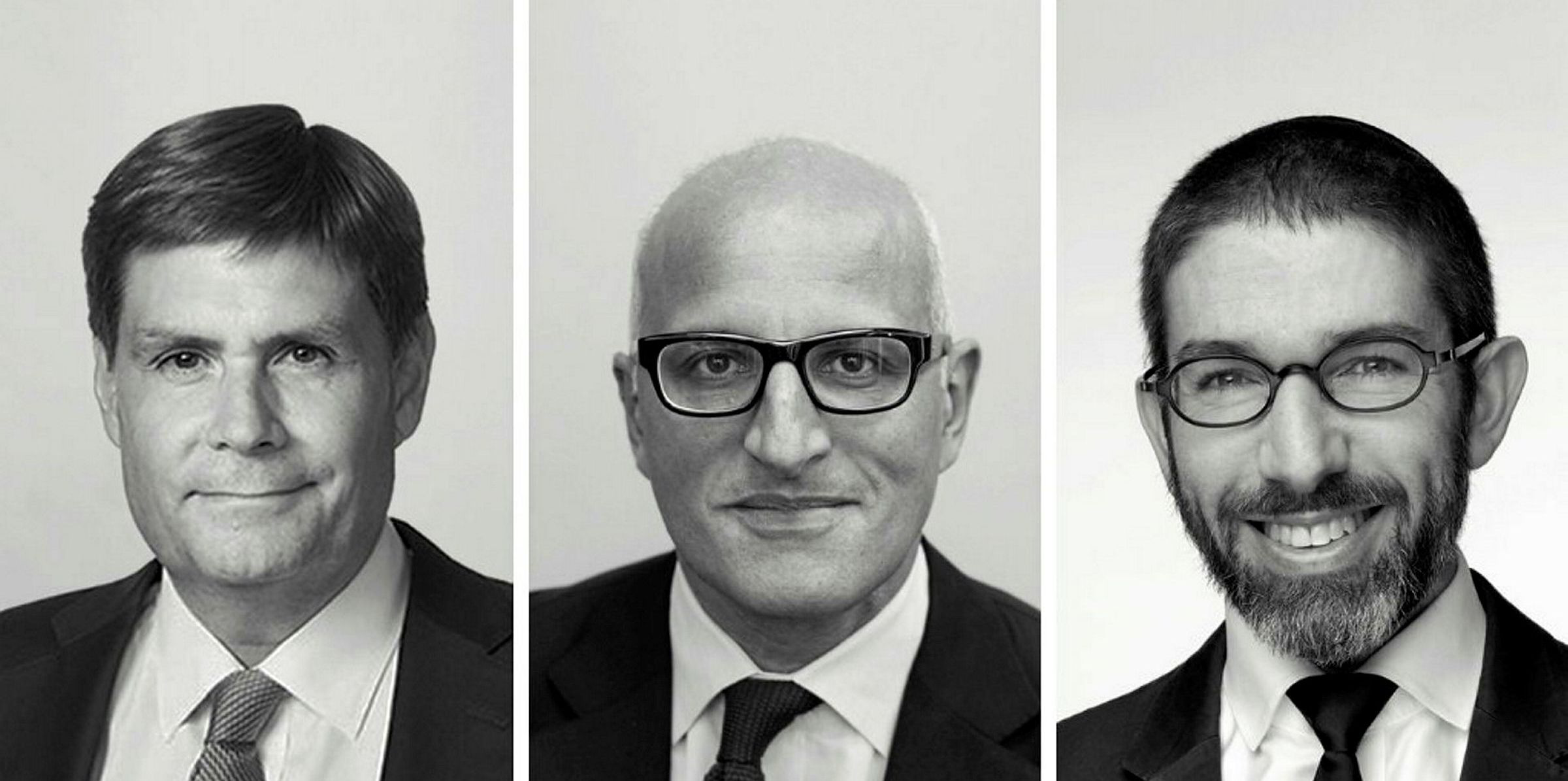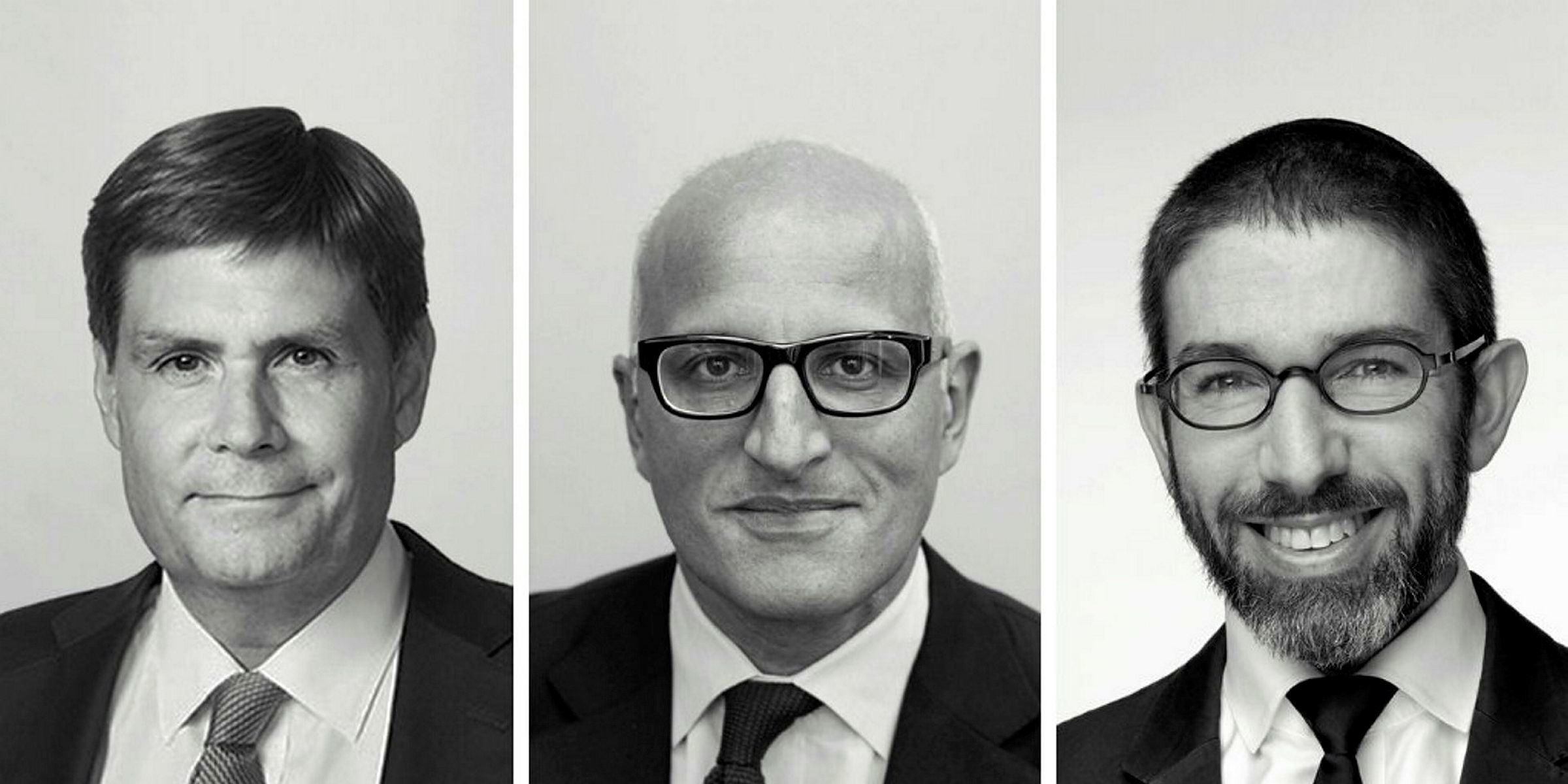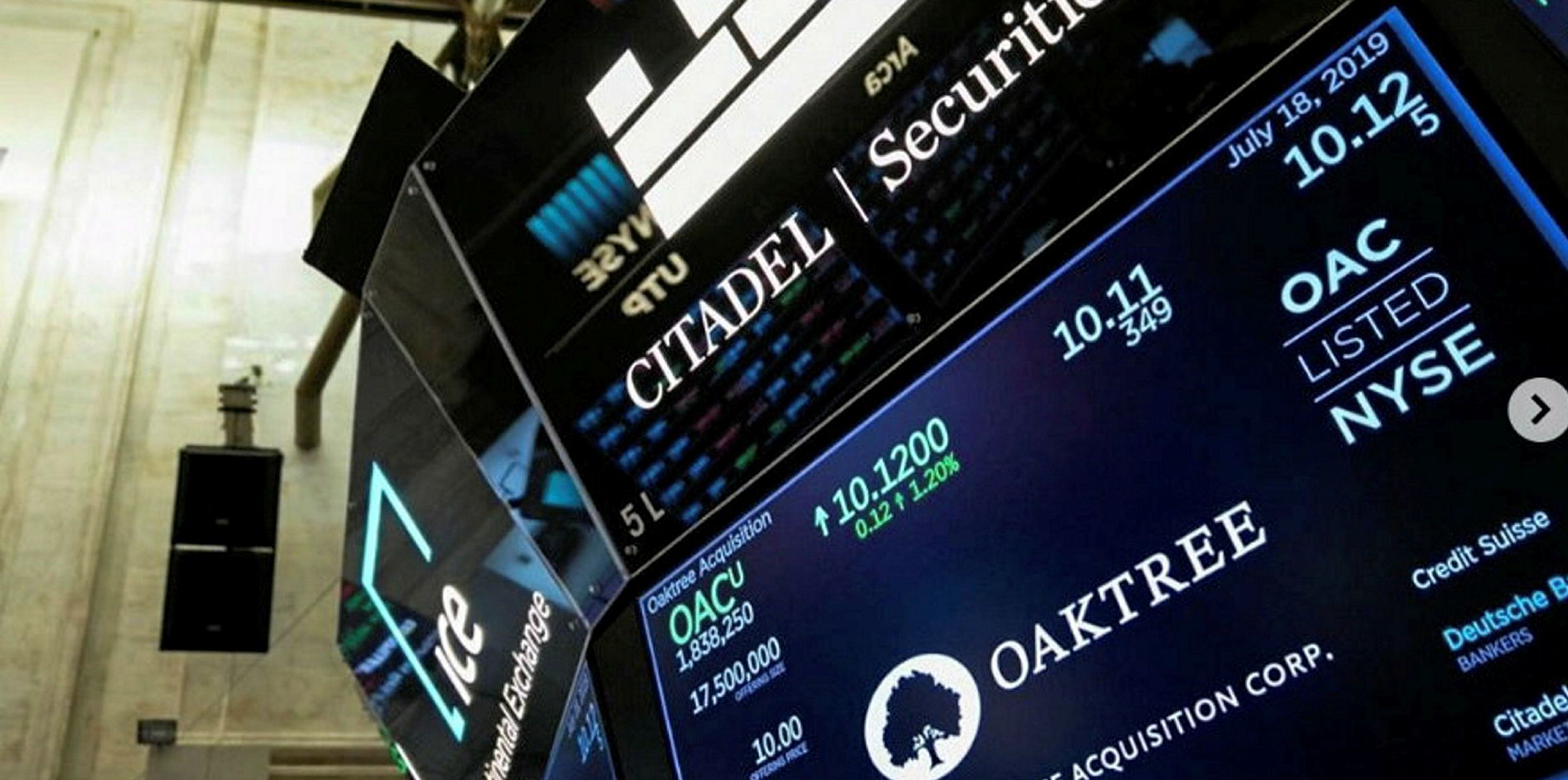Many shipowners are setting themselves up to be price-takers for compliant fuel when the IMO 2020 regulations come into force.
That is according to Clarksons and energy hedging and fuel specialist Enerjen Capital, which have formed a collaboration that they say will put pricing power for compliant bunkers back in the hands of the shipowner.
Shipping companies could end up paying more than necessary for compliant fuel if they sign supply contracts directly with oil majors ahead of the deadline, Enerjen's chief investment officer Gus Majed told TradeWinds.
"At the moment, the shipowners have the pricing power, but what's happened is they've been scared into a situation where they’re giving that pricing power away," he explained.
"The [oil] majors and the blenders, they're trying to take over this pricing power, and some of the shipowners are being lulled into a false sense of security where they've actually added more financial risk to their books."
Aside from securing physical supply, shipowners' other option for IMO 2020 compliance is to hedge bunker prices using derivatives.
But research shows that less than 1% of the global bunker market has been hedged for 2020 — and those volumes may be hedged wrongly.
In collaborating, Clarksons and Enerjen aim to help shipping companies make better-informed decisions to insulate themselves from price and supply volatility, for compliant bunkers and even high-sulphur fuel oil (HSFO).
On a mission
Ahead of IMO 2020, Clarksons is offering its clients "bespoke" structured financial solutions for bunkers, comprising both physical supply and linked price-risk hedging tools.
But Clarksons' trading of fuel derivatives and swaps is regulated by the UK's Financial Conduct Authority, which prevents the broker from giving actual execution trading advice to its clients.
Enter Enerjen, which has been assisting Clarksons’ clients as an independent third-party consultant since March.
It offers advice in designing and implementing bunker trading and hedging strategies, as well as when to execute them.
“In the next 18 months, there will be a period of large bunker price volatility swings," David Paul, Clarksons' managing director of commodities, said.
"Understanding and quantifying a fleet's true price risk exposure to the bunker IMO 2020 change and the full potential impact on the operating margin and cash flow is crucial."
But developing a "robust" strategy for hedging and physical bunker supply will require a high level of expertise and experience in risk management during this period, according to Paul.
“In many shipping companies, this skillset and understanding may need bolstering,” he said.
"This is another area in which Enerjen can provide an independent confidential assessment, quantification and help develop a forward strategy to manage these exposures for clients."

Enerjen can also offer physical supply and said it has an exclusive agreement in place with a supplier, which it describes as a "global player", to offer compliant fuel.
The London-based company, which offers "green" energy hedging and financial engineering solutions, in late February completed a note offering for shipowners who started hedging against IMO 2020, as TradeWinds reported.
Price investigation
Stephen Schueler, Enerjen’s chief executive, said many shipping companies are still stuck in the “denial and anger” stage as IMO 2020 approaches.
“We’re here to help the shipping industry transition to greener fuel and to move to that acceptance/commit stage,” he said.
Clarksons and Enerjen tell TradeWinds that the shipping industry still has not entirely come to grips with how IMO 2020 will affect its bottom line, particularly with respect to compliant fuel.
Pricing, of course, is everything. But any shipping company that fails to question how that pricing has been put together could expose itself to financial risk, according to Clarksons and Enerjen.
"There has to be deeper insight into the actual pricing of the molecules and the constituents of the molecules," Majed said.
"Secondly, what is the actual blended cost? What [price] can you blend and supply the compliant fuel at?"
Shipowners with that insight will be able to save themselves a "considerable amount" in the physical procurement and hedging of compliant bunkers, according to Majed.
Questioning gasoil-linked contracts
Some of the oil majors have been approaching shipping companies directly and offering them prices for compliant fuel that are based on the price of gasoil, minus a certain amount.
But Clarksons and Enerjen ask: why buy compliant fuel at a price based on gasoil and set by the oil company?
Why not buy it at prices based on HSFO and help set the price, rather than simply take it?
"What's the correlation between gasoil-minus and the 0.5% [sulphur content fuel] index that is published every week by Platts?" Paul asked.
"I can tell you that at the moment it's not very highly correlated, which means basis risk."
This risk comes from the lack of liquidity and transparency in the traditional bunker market, in which prices are "discovered" during a short regional 30-minute-long trading window held by a third party, Platts.
Typically only 50,000 tonnes of product trades during this window, yet this small volume has massive influence as it sets that day’s price print, which is used by the shipping industry to settle physical delivered bunkers during a set period.
Compare this to the 500,000 to 1.5m tonnes of crude, products and derivatives that are traded daily on the ICE/CME exchanges.
The massive liquidity of the market provides a greater level of certainty that the prices used for buying and selling bunker fuels are being reflected accurately and truly.
Clarksons and Enerjen see a huge disconnect between the two markets, which could impact clients negatively.
"There's a 1:10 leverage in terms of pricing power," Majed explained.
"What we're trying to say to shipowners is: every time you book your physical on a gasoil-related basis, you're giving huge pricing power away. You need to be aware of that.
“And that pricing power can actually be somewhat detrimental to your financial health."
Hedging bets
The two companies said the urgency to prepare for the 2020 deadline cannot be understated, and research shows that shipping has under-hedged its future fuel supply.
From mid-October, shipowners will begin buying compliant bunkers in earnest to secure supply into February next year, but this could likely result in shortages, according to research by Enerjen.
The firm expects around 50m tonnes to be bought during this period, of which around 6m tonnes will go into storage.
"The Asian short per month is 6.7m tonnes, so you've actually got a month's worth of supply — and thereafter, what's going to happen?" Majed asked.
The global bunker market has an estimated trading volume of around 250m tonnes annually, yet only 2.5m tonnes has been hedged via derivatives for the full year in 2020, according to research by Enerjen and data by ICE Futures Europe.
High-sulphur fuel price risk
Shipowners who have opted to use scrubbers rather than compliant fuel also need to consider their future fuel supply and its pricing, according to the two companies.
Those who have financed scrubbers are relying on a healthy differential between the price of HSFO and compliant fuel to generate "payback" for the exhaust gas cleaning systems.
"Locking in that saving is very important and that's another opportunity for Enerjen and Clarksons to come in and help companies," Paul said.
Scrubber-fitted ships with lower fuel costs could be able to offer freight rates of up to $200 per day below their competitors who use compliant fuel — but only if they are able to lock in those low prices, he said.
But this pricing differential is not necessarily assured and there will be certain points at which to enter the market that will be better than others, Paul added.
Neither does installing a scrubber mean you can forget about the cost of HSFO, Majed said.

"When you look at sanctioned Venezuela, Iran, high-sulphur crude declines in Mexico, the high-sulphur market is on fire," he explained.
Enerjen is telling its clients, which include users of both scrubbers and compliant fuel, to assess the implications for not only compliant fuel but for HSFO too.
"Is it going to be readily available for all these ports? Are you going to be putting yourself in a monopolistic pricing position and should you be looking to forward hedge high-sulphur prices, if we've had a collapse in the high-sulphur cracks and Brent has come off at over 20%? These all go into the decision mix," Majed said.
Shipowners have traditionally seen higher bunker prices translate to higher freight rates, but Jake Greenberg, Enerjen's chief commercial officer, said that relationship will be disrupted come 2020.
"What if you have this disruption and the bunker fuel price has a massive gap up, and it just takes a little bit longer for the freight rate to adjust?" Greenberg said.
"If you have this margin compression over a sustained period of time — perhaps where even margins go negative — it could be very problematic and that's not an unrealistic scenario."
Paul's message to shipowners is: "Add some competition to your deck."
"Time to bring in some other people who are experts and who can help you investigate other potential supply chains and pricing," he said.
"It might even bring you a cost saving versus your current option."(Copyright)









